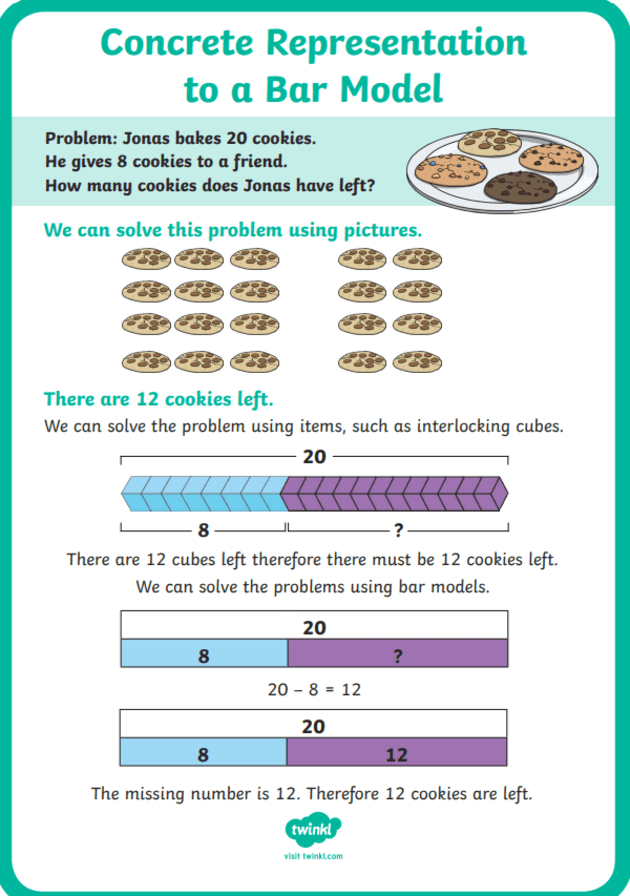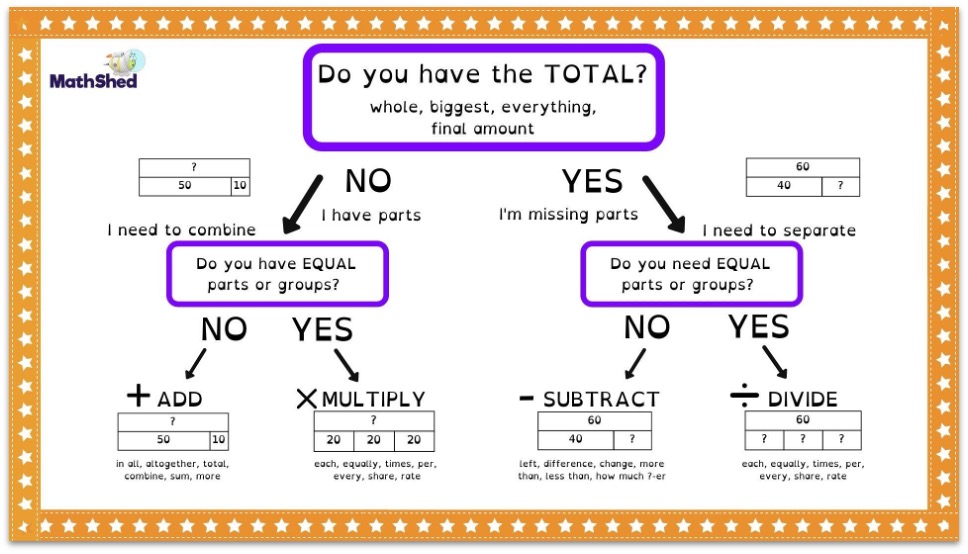Exploring Bar Design Drawing Techniques: A Comprehensive Overview to Visualizing Mathematics Concepts
Bar version drawing methods act as a valuable resource for both instructors and pupils in picturing mathematical principles. These designs streamline intricate mathematical partnerships, helping in the comprehension of addition, subtraction, division, and reproduction. This guide lays out efficient approaches for carrying out bar models, promoting energetic engagement and real-world links. As viewers explore the functional applications and training suggestions, they will certainly reveal how these methods can change their strategy to mathematics.
Comprehending the Basics of Bar Model Drawing
Bar design attracting offers as a powerful visual device in maths, facilitating the understanding of analytical methods and mathematical partnerships. This strategy involves standing for numbers and their relationships via rectangular bars, making it less complicated to visualize operations such as addition, reduction, department, and reproduction. Each bar's length represents a specific worth, permitting students to compare quantities and understand proportions plainly.
To develop a bar version, one begins by determining the problem's essential elements, typically breaking it down into components that can be aesthetically represented. As an example, in a straightforward enhancement issue, two bars can be attracted, with their sizes representing the addends. The consolidated length highlights the amount. Additionally, bar models can be adjusted for a lot more complicated problems, consisting of fractions and proportions, by readjusting the bars as necessary. Grasping these basics lays a strong structure for efficient problem-solving and much deeper mathematical comprehension.
Advantages of Using Bar Versions in Mathematics
Making use of bar designs in maths supplies many advantages that improve knowing and understanding. These graphes aid pupils in understanding intricate concepts by damaging them down right into manageable elements. Bar versions offer a clear structure for showing partnerships between numbers, making abstract concepts more concrete. They advertise a much deeper understanding of mathematical operations and help with problem-solving by enabling students to envision the data they are working with.
Bar models support the development of important assuming skills, as students should examine and analyze the aesthetic details to draw conclusions. This technique urges active engagement with the product, strengthening retention and proficiency of mathematical principles. By fostering a strong structure in aesthetic literacy, bar versions encourage learners to come close to various mathematical challenges with self-confidence. Overall, the integration of bar models right into maths education and learning shows valuable in cultivating both understanding and logical abilities amongst students.
Applying Bar Models to Addition and Reduction
Bar models offer as an efficient tool for visually standing for enhancement and reduction problems. By illustrating the connection in between numbers, they enhance understanding and assist in problem-solving. Furthermore, real-life applications of these models can aid students understand mathematical principles in useful contexts.
Representing Addition Visually
When pupils experience addition and subtraction issues, visual help can significantly improve their understanding of these procedures. Bar versions act as effective tools for representing enhancement. By dividing a rectangle right into sectors that match to the numbers included, trainees can imagine the connection between the amounts. If a student needs to add 3 and 5, they can create a bar divided into two sections: one area standing for 3 and the various other standing for 5. This clear depiction not just streamlines the enhancement process but also reinforces the concept of combining quantities. As students manipulate these visual help, they create a much deeper understanding of addition, bring about boosted analytic abilities and higher self-confidence in their mathematical capabilities.
Reduction With Bar Models
Although subtraction is typically regarded as an extra intricate procedure than addition, bar models can effectively clarify this procedure for pupils. By aesthetically representing the quantities entailed, trainees can better understand exactly how numbers connect to each other. In a bar design for subtraction, one bar stands for the overall, while another shows the quantity being deducted. This visual difference helps pupils understand the concept of "removing." If a bar reveals 10 systems, and an additional bar representing 4 devices is removed, pupils can easily see that 6 systems remain. This method not just fosters understanding of reduction but additionally help in establishing analytic skills, enabling pupils to imagine their mathematical thinking and boost their overall comprehension of mathematical ideas.
Real-Life Application Instances
Understanding reduction via bar models lays a foundation for using these strategies in real-life circumstances. In various contexts, such as budgeting or buying, people can envision just how much cash continues to be after costs. If a person has $50 and invests $20, a bar model can represent the total quantity and the invested part, illustrating that $30 is left. Additionally, parents can utilize bar designs to assist kids comprehend the amount of even more things require to be included to finish a set, such as having three apples and needing five. This aesthetic depiction streamlines intricate troubles, promoting understanding and retention. Inevitably, bar versions function as efficient tools in daily decision-making, improving mathematical understanding in useful circumstances.
Picturing Multiplication and Division With Bar Models
In discovering the application of bar versions for reproduction and division, it is important to realize their fundamental ideas. Constructing reproduction designs allows students to picture partnerships between numbers, while effective department methods can be shown through these aesthetic aids. This strategy boosts comprehension and analytic abilities in mathematics.
Understanding Bar Models
Bar designs act as an effective visual device for showing the principles of reproduction and department. They enable learners to represent mathematical partnerships in an organized layout, facilitating a much deeper understanding of these operations. In reproduction, bar designs present groups of equal dimension, enabling individuals to picture the overall quantity when incorporating these teams. Alternatively, in department, bar designs assist depict just how a total amount is split into smaller sized, equal parts, clarifying the principle of dividing. By using these aesthetic help, students can grasp the underlying concepts of reproduction and department better. This technique not only enhances comprehension however additionally supports analytical skills, making bar models an invaluable property in mathematical education and learning.
Creating Multiplication Versions
Constructing reproduction versions using bar diagrams supplies a clear method for picturing the process of multiplication. These models enable students to stand for reproduction as groups of equal components, making abstract concepts helpful resources extra concrete. To show (3 times 4), a pupil can attract one bar split right into three equal sections, each representing 4 systems. Additionally, developing a 2nd bar with the exact same length enhances the understanding of duplicated enhancement, as each sector corresponds to one team. This graph not just aids in comprehending multiplication however also boosts analytic abilities. By utilizing bar versions, students can much better comprehend connections in between numbers and create a robust foundation for more complex mathematical ideas, resulting in raised confidence in their capacities.
Picturing Division Approaches
.webp)
Fixing Word Troubles Utilizing Bar Design Techniques

As an example, in a problem entailing enhancement and subtraction, students can attract separate bars for each amount and afterwards manipulate them to locate the solution. This procedure not only makes clear the problem but likewise promotes a deeper conceptual understanding. Bar versions can be adjusted for different types of word troubles, making them flexible across different mathematical topics. Eventually, using bar versions can substantially boost pupils' analytical skills by giving a clear aesthetic pathway to come to the appropriate response.
Integrating Bar Models in Different Math Topics
Bar designs can be perfectly incorporated right into different math topics, improving trainees' understanding of principles beyond fundamental arithmetic. In algebra, these visual tools help in standing for equations and inequalities, enabling learners to picture partnerships in between variables. When tackling geometry, bar designs can highlight the homes of shapes and spatial reasoning, assisting pupils grasp ideas like area and boundary efficiently. In data, bar models facilitate the analysis of data collections, permitting students to contrast quantities and identify fads visually. Furthermore, incorporating bar models within measurement topics aids in understanding units and conversions by providing a tangible depiction of amounts. By employing bar designs across different mathematical locations, educators can promote a deeper understanding go to these guys of complicated principles, thereby boosting problem-solving skills and advertising important reasoning (bar model drawing techniques). This versatility shows the energy of bar models as a foundational device for pupils in their mathematical trip
Tips for Teaching Bar Designs Successfully
Incorporating bar models into teaching methods calls for thoughtful techniques to optimize their effectiveness. Educators should begin by presenting bar versions with simple, relatable examples that students can easily understand. This assists to develop self-confidence and experience with the principle. Gradually increasing the intricacy of problems enables students to use their skills gradually. Additionally, instructors must encourage trainees to develop their own bar designs, advertising active interaction and possession of their knowing.
Integrating collective activities can additionally boost understanding, as students go over and resolve issues in groups. Continuous feedback is essential; educators should give useful commentary on trainees' bar version depictions to direct improvement. Linking bar designs to real-life situations strengthens their relevance, helping pupils see the practical applications of their mathematical skills. By executing these approaches, instructors can effectively harness the power of bar versions in their mathematics direction.
Frequently Asked Concerns
Can Bar Versions Be Utilized in Various Other Topics Besides Mathematics?
Bar versions can undoubtedly be made use of in numerous topics past math. They efficiently show concepts in scientific research, social researches, and language arts, helping to visually represent partnerships, procedures, and ideas for boosted understanding throughout self-controls.
What Age Team Is Finest Matched for Knowing Bar Versions?
Bar models are best fit for youngsters ages 7 to 12, as they develop concrete reasoning abilities during this duration (bar model drawing techniques). At this age, students can effectively understand abstract concepts through graph and analytical strategies
Exist Digital Devices for Creating Bar Models?

How Can I Evaluate Pupil Comprehending of Bar Designs?
Assessing student understanding of bar models can entail quizzes, empirical evaluations, and seminar. Teachers might additionally evaluate students' completed versions and their ability to explain their reasoning, making sure a complete analysis of comprehension.
What Are Typical Mistakes When Making Use Of Bar Models?
Usual blunders when using bar models include misstating amounts, failing to precisely identify bars, perplexing enhancement and subtraction, neglecting to use regular scales, and ignoring the importance of clear visual splitting up in between different aspects.
In enhancement, bar versions can be adapted for much more intricate troubles, including fractions and ratios, by readjusting the bars accordingly. Subtraction is commonly regarded as an extra complex operation than addition, bar designs can successfully clarify this procedure for pupils. In a bar version for subtraction, one bar represents the total, while another suggests the quantity being subtracted. If a bar shows 10 systems, and one more bar representing 4 devices is eliminated, trainees can conveniently see that 6 systems remain. When dividing an overall right into equivalent teams, trainees can attract a lengthy bar to stand for the whole and then section it into smaller bars that indicate each group.